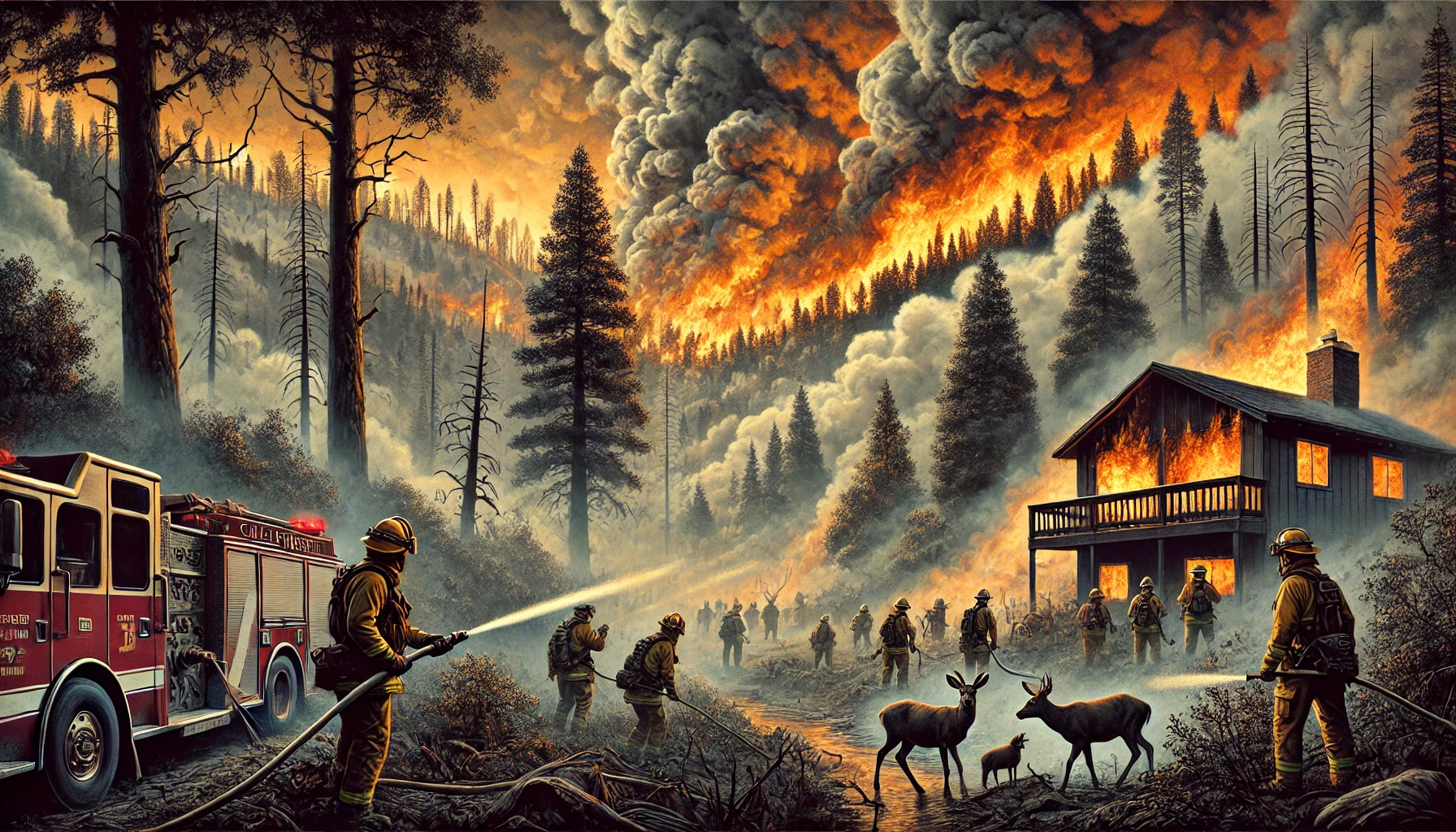California, often celebrated for its stunning landscapes and vibrant cities, has been increasingly overshadowed by the devastating impact of wildfires. With each passing year, the state’s wildfire season grows longer and more severe, leaving behind a trail of destruction that affects lives, infrastructure, and the environment. Understanding the root causes, impact, and potential solutions to this crisis is crucial for addressing what has become an alarming reality for the Golden State.
The Causes of California Wildfires
Wildfires in California are the result of a complex interplay of natural and human-made factors. The state’s Mediterranean climate, characterized by dry summers and wet winters, creates ideal conditions for wildfires. However, climate change has exacerbated these conditions, leading to longer droughts, higher temperatures, and more frequent heatwaves. These changes have dried out vegetation, turning it into highly flammable fuel.
Human activity further amplifies the risk. Electrical utility equipment failures, such as those linked to Pacific Gas and Electric (PG&E), have been responsible for some of the state’s most destructive wildfires. Additionally, poorly managed forests, urban expansion into fire-prone areas, and accidental ignitions contribute significantly to the problem.
The Devastating Impacts
Loss of Life and Property
Wildfires have claimed thousands of lives over the past decade, including both residents and first responders. The 2018 Camp Fire, for instance, was the deadliest in California’s history, resulting in 85 fatalities and the destruction of nearly 19,000 structures in the town of Paradise. Entire communities have been wiped out, leaving thousands homeless and financially devastated.
Environmental Damage
The environmental consequences of wildfires are far-reaching. They release massive amounts of carbon dioxide, contributing to global warming, and destroy ecosystems, displacing wildlife and disrupting biodiversity. Wildfires also degrade air quality, with smoke and ash traveling hundreds of miles and posing health risks to millions of people.
Economic Toll
The economic cost of wildfires is staggering. Between property losses, firefighting efforts, and infrastructure repairs, the annual price tag runs into billions of dollars. Insurance companies are increasingly reluctant to cover properties in high-risk areas, exacerbating the financial burden on residents and local governments.
Mitigation and Prevention Efforts
Addressing California’s wildfire crisis requires a multifaceted approach involving government agencies, communities, and individuals. Key strategies include:
Forest Management
Proper forest management is critical. This includes controlled burns to reduce the accumulation of dry vegetation and thinning overgrown forests. These practices help lower the risk of large-scale wildfires by reducing the amount of available fuel.
Modernizing Infrastructure
Investments in modernizing electrical infrastructure can significantly reduce fire risks. Utilities must upgrade aging equipment, bury power lines where feasible, and implement advanced monitoring systems to detect and address potential issues before they spark fires.
Community Preparedness
Public education and community preparedness play a vital role in reducing wildfire impacts. Residents in fire-prone areas are encouraged to create defensible spaces around their homes, adhere to evacuation plans, and stay informed about fire risks through early warning systems.
Legislative Actions
State and federal governments must continue to enact policies that prioritize wildfire prevention and response. This includes allocating funds for firefighting resources, research into fire-resistant materials, and climate change mitigation efforts.
The Role of Climate Change
Climate change is both a driver and a consequence of California’s wildfire crisis. Rising global temperatures exacerbate drought conditions, while the emissions from wildfires further contribute to climate change. Addressing this dual challenge requires a global commitment to reducing greenhouse gas emissions and transitioning to renewable energy sources.
Stories of Resilience
Amid the devastation, stories of resilience and innovation offer hope. Communities have rallied together to rebuild, while technological advancements are providing new tools for firefighting and prevention. Drones, satellite imaging, and artificial intelligence are being used to predict fire behavior and coordinate responses, demonstrating the potential of technology to save lives and resources.
Looking Ahead
California’s wildfire crisis underscores the urgent need for a comprehensive and sustained effort to address both the immediate and underlying causes of this growing threat. By prioritizing prevention, embracing innovation, and tackling climate change, the state can reduce the frequency and severity of wildfires. However, this requires collective action and a commitment to safeguarding the environment, communities, and future generations.
Wildfires are a stark reminder of humanity’s interconnectedness with nature and the consequences of neglecting this relationship. For California, the path forward is clear: adapt, innovate, and persevere. Only then can the Golden State hope to mitigate the devastating impact of wildfires and ensure a safer, more sustainable future for all.



